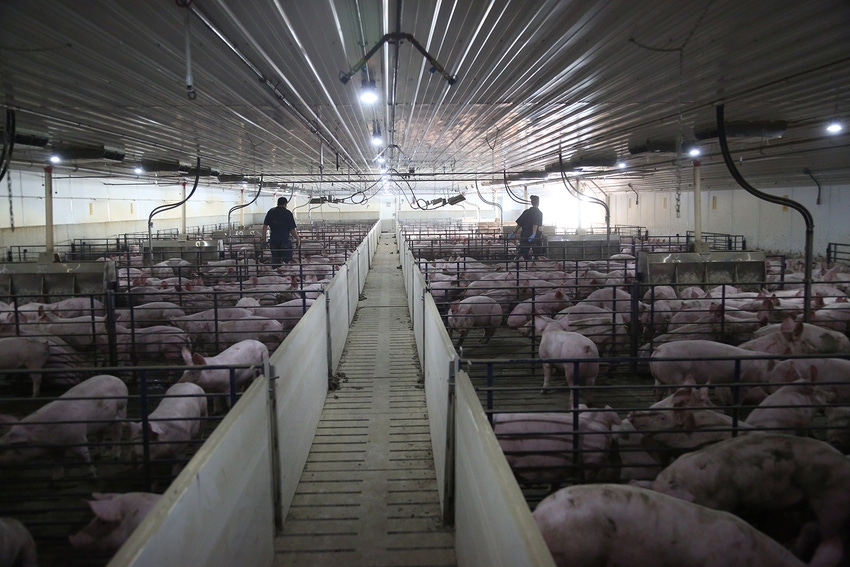PCV3: What do we know, what do we still need to figure out?
Since PCV3 was first identified in the United States in 2015, many questions still surround the newest member of the circovirus family.

When it comes to fielding questions about porcine circovirus 3, Brett O’Brien says the inquiry she receives most often is “do you have an established case definition yet?” While the technical services veterinarian for Merck Animal Health says a full case definition has not been established, reproductive failure appears to be the main issue associated with PCV3 while the impact on growing pigs remains unclear.
“Our company is trying to actively learn by working with producers and veterinarians to make heads and tails of what PCV3 truly does, what truly defines clinical cases and what are the implications and impacts on production,” O’Brien says.
Since PCV3 was first identified in the United States in 2015, many questions still surround the newest member of the circovirus family. While there have been recent cases that reported an association of PCV3 with several conditions including porcine dermatitis and nephropathy syndrome or PDNS, multi-systemic inflammation, myocarditis and congenital tremors, O’Brien says the primary symptoms her team has been working with are reproductive failure problems, mainly increased mummified and stillborn fetuses resulting in decreased litter size along with more non-viable piglets. Abortions and delayed return to estrus intervals have also been observed.
Initially, many in the industry have questioned the clinical relevance of PCV3 in the U.S. swine herd.
In recent work by Bailey Arruda, DVM, Iowa State University Veterinary Diagnostic and Production Animal Medicine, and presented at the 2019 American Association of Swine Veterinarians annual meeting, PCV3 was detected in 22 cases of reproductive loss from 20 sites between January and November of 2018. Fetal tissues representing multiple litters from each of these cases were positive for PCV3 by quantitative polymerase chain reaction with Ct values commonly at 20 or below with some as low as 9.4, suggesting a very high viral load. Fetal tissues were PCR-negative for other known causes of porcine reproductive failure including porcine parvovirus, porcine reproductive and respiratory syndrome virus, porcine circovirus type 2 and Leptospira.
The Veterinary Diagnostic Laboratory at the University of Minnesota has also been investigating in situ hybridization to show that PCV3 can be, and has been, found in multiple tissues from pigs with clinical signs.
“Again, these preliminary diagnostic findings are a starting point,” O’Brien says. “There have been more recent discussions and questions regarding growing pig impact, but I think there have been more overt signs on the reproduction side and initially that’s where the primary focus has been.”
Another unknown regarding PCV3 is if there are secondary pathogens involved.
“We don’t want to ignore something that could potentially be compromising the health of our animals and might turn into a significant issue for the U.S. swine industry,” O’Brien says.
Cross protection between commercially available PCV2 vaccines is not expected, because PCV3 only shares 37% to 40% homology with PCV2. However, Merck was able to get the PCV3 gene of interest on the prescription label for the Sequivity platform. O’Brien also stresses the importance of developing a serum antibody test for PCV3.
“When you are trying to understand the impact of a tool, like a vaccine, we need to measure the immune response to vaccination and determine if we are eliciting one or not as well as correlating that response with a reduced disease impact (i.e. shedding, prevalence and/or performance),” O’Brien says. “That requires a serology test to be available. The same with understanding the historical experience of a negative animal, is that negative animal on PCR naïve, never been exposed, or is it negative for the virus on the day the sample was collected? We will not be able to truly assess that until validated serological assays are available.”
According to the paper “Porcine circovirus type 3: Field experiences with a potentially emerging pathogen” prepared by Merck Animal Health technical service veterinarians and Emily Byers, DVM, Prestage Farms, at the 2019 AASV annual meeting, most customer requests for the vaccine using the Sequivity platform have been based on the need to address PCV3 reproductive failure, especially in situations such as start-ups and re-populations where a high percentage of the females were gilts. The herd veterinarian’s primary concern was often that young females were at the greatest risk based on their initial experiences with PCV3.
“Folks are now diving deeper into their production records and looking at case scenarios trying to understand if there are additional health impacts to the growing pig,” O’Brien says. “They may be not as extreme as the reproductive failure cases, but there might be potential for performance impacts.”
In addition to looking for red flag indicators in production records, O’Brien also advises producers and herd veterinarians to take affected tissue samples, understand the level of shed on site and obtain a sequence. The sequencing database is not very diverse right now, with only 1% to 4% genetic variation, O’Brien says which is very similar to what was seen with PCV2.
“I think what we are seeing now is it is pretty prevalent,” O’Brien says. “PCV2 has been endemic within pig populations for many years and it appears that is more of the trend with PCV3.”
The main driver to vaccinate thus far has been the severity of the problem. This past fall there were more issues associated with PCV3 on the reproduction side, but O’Brien says more recent discussions have been on the potential impact on the grow-finish side.
“With the customers we work with, I have seen a momentum increasing in looking at the associated conditions,” O’Brien says. “Where we were more on the fence last summer, we have had a lot of touch points lately that shows it’s of high interest to understand its impact to the health of our pigs.”
About the Author(s)
You May Also Like





